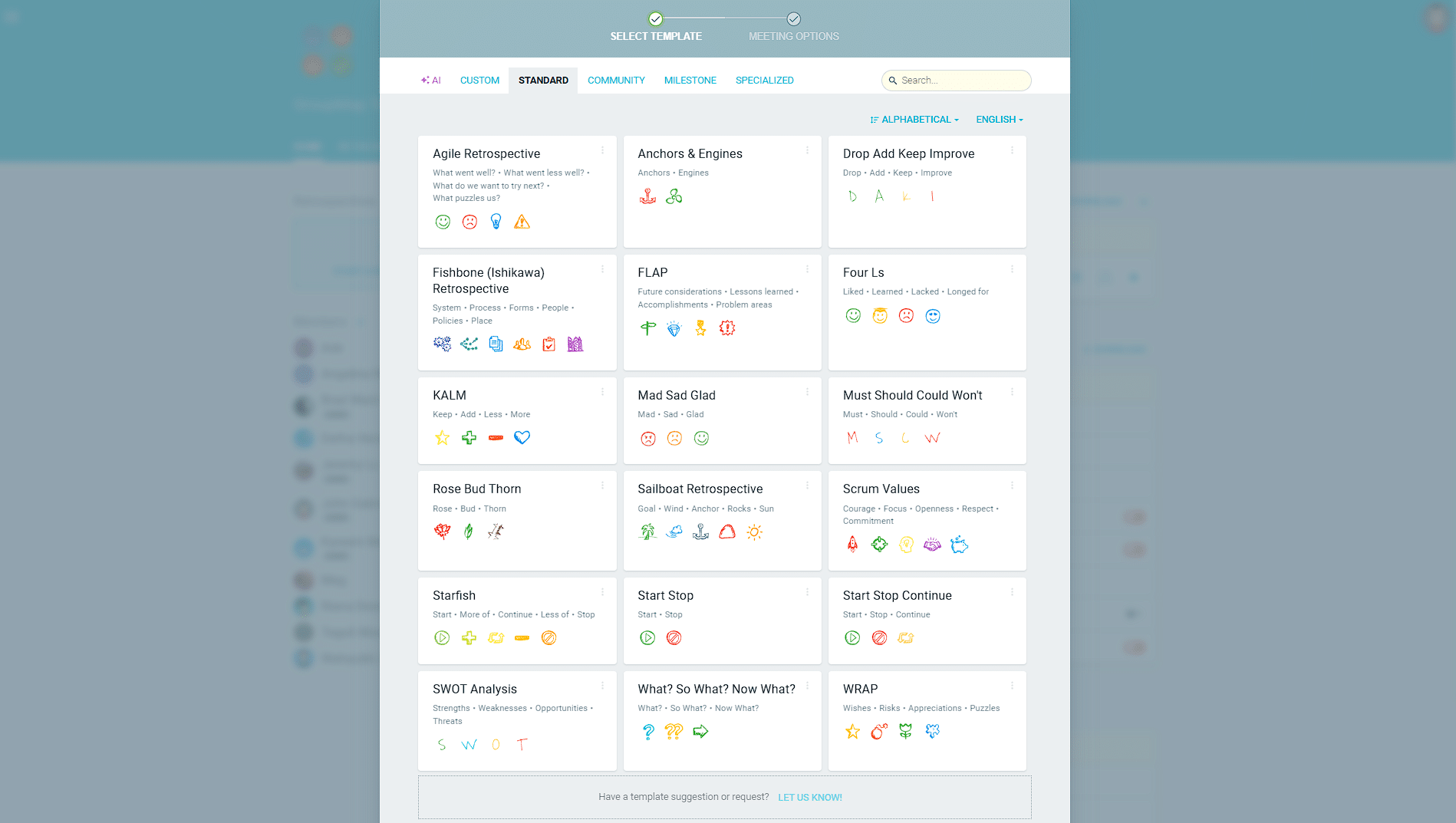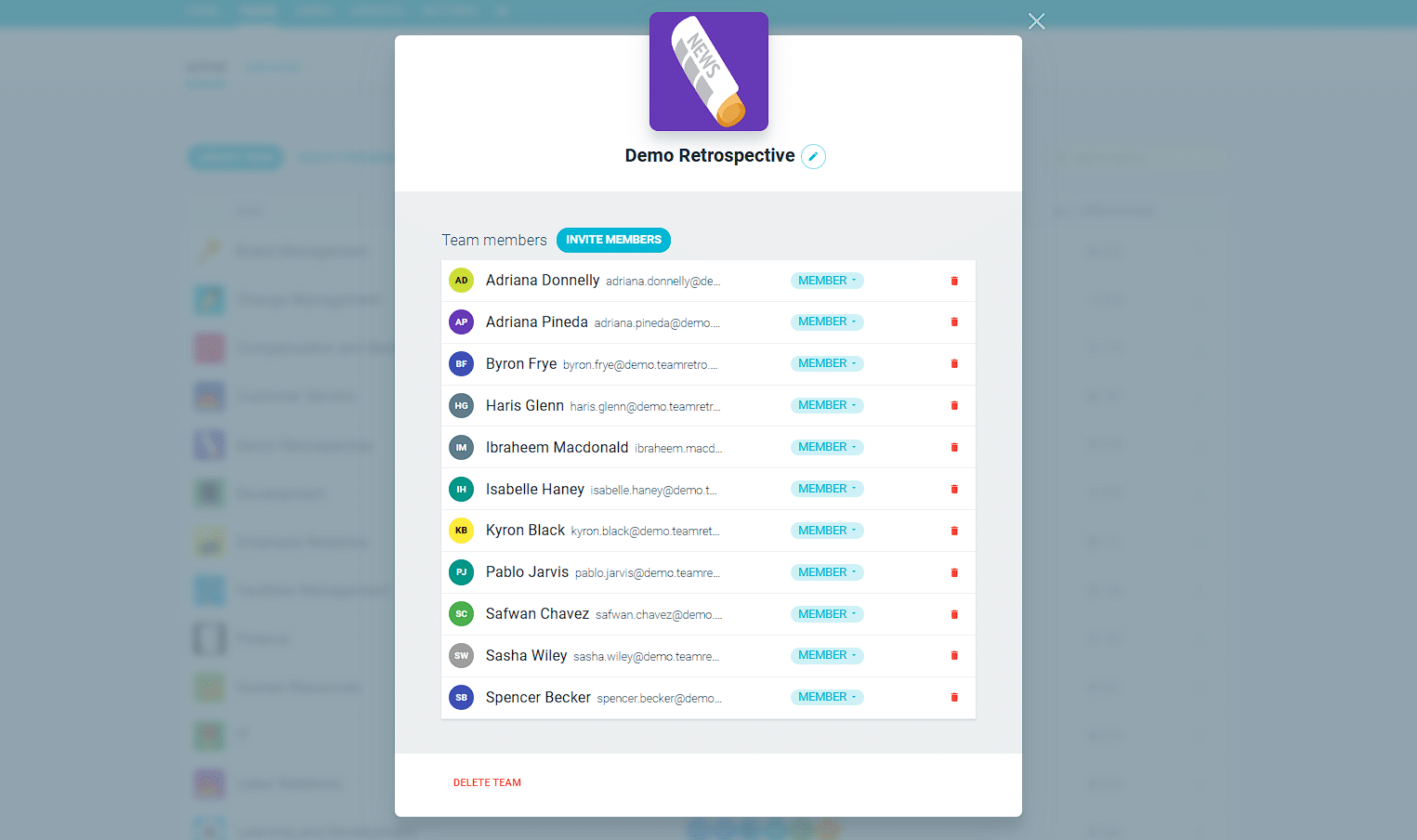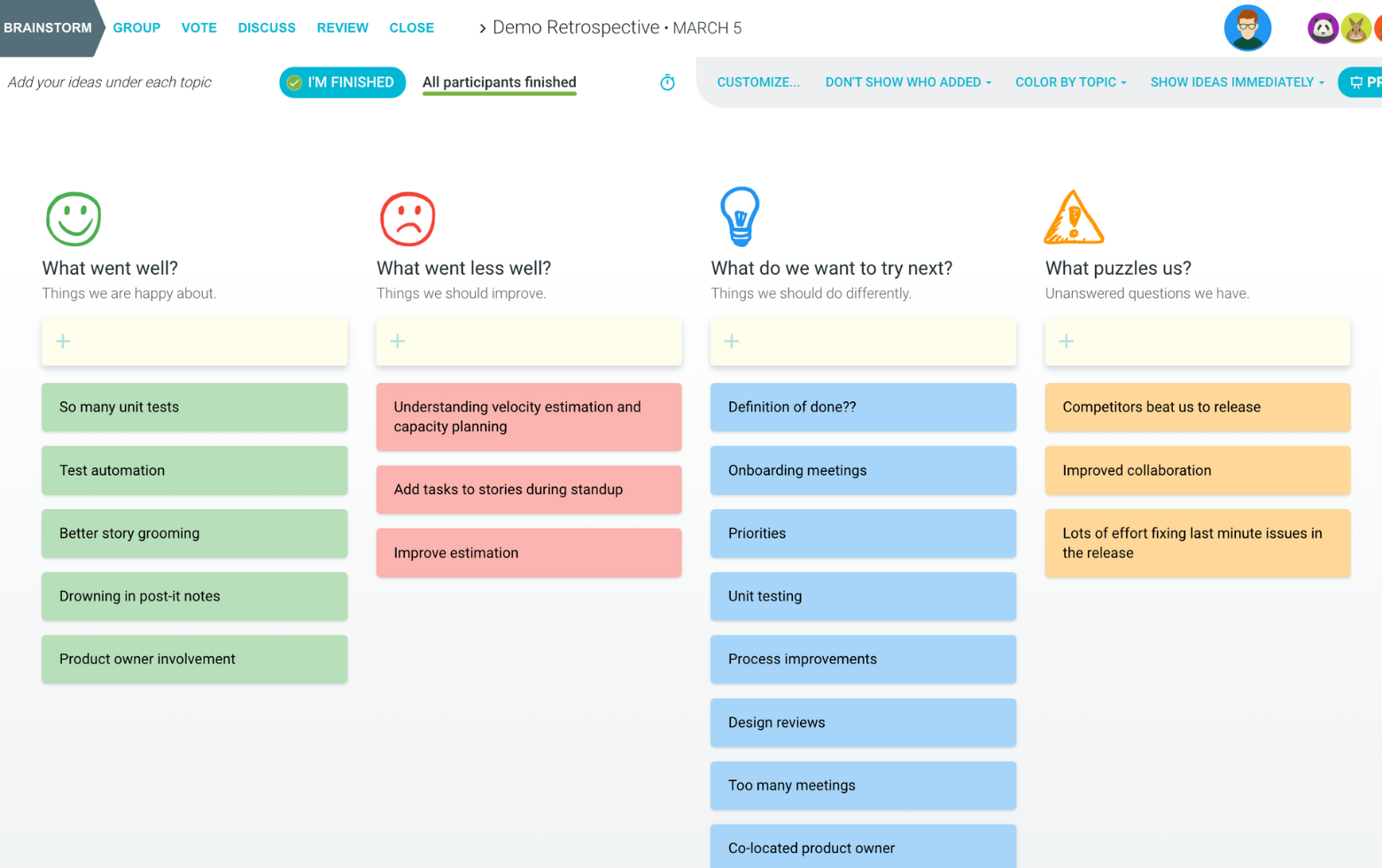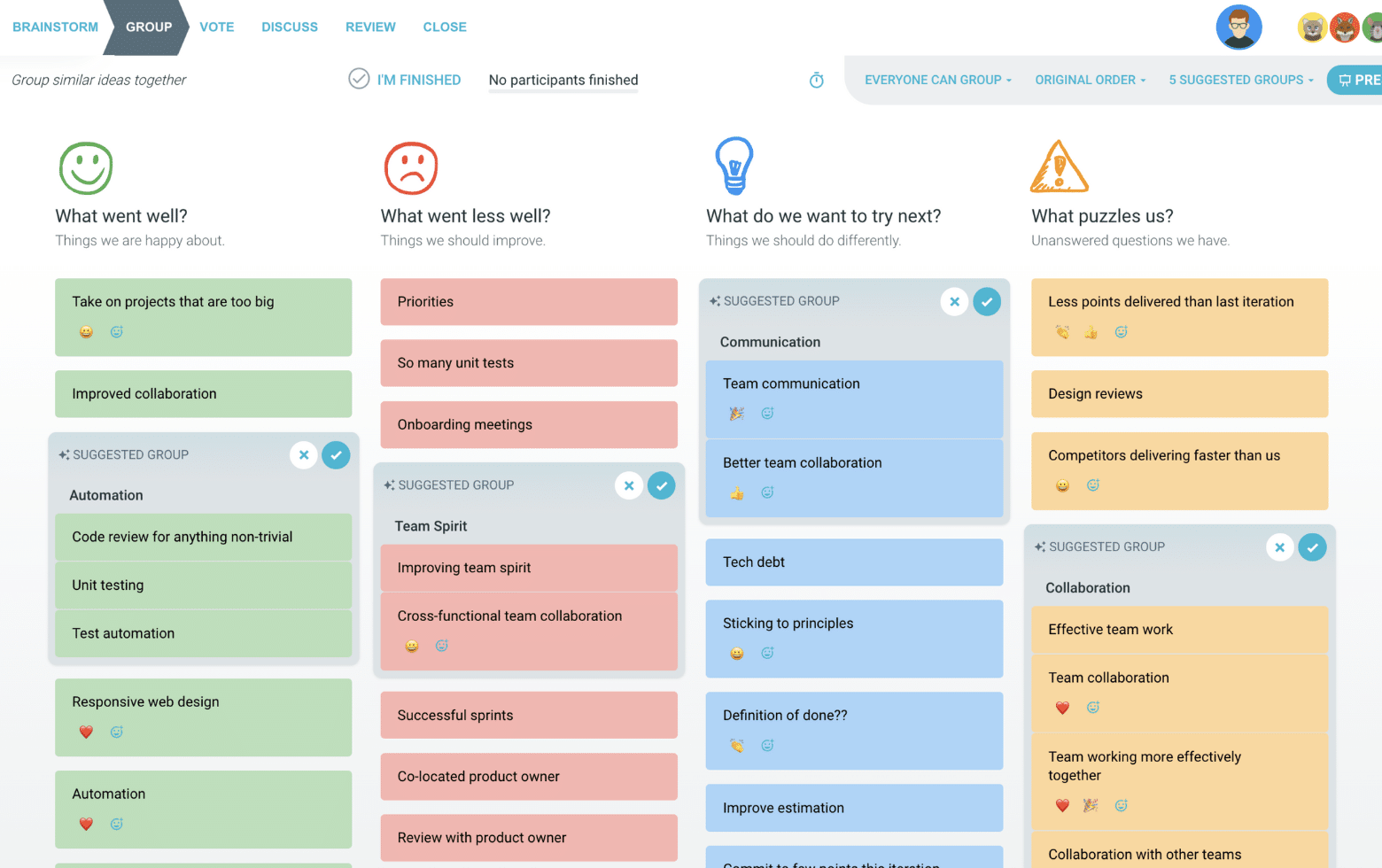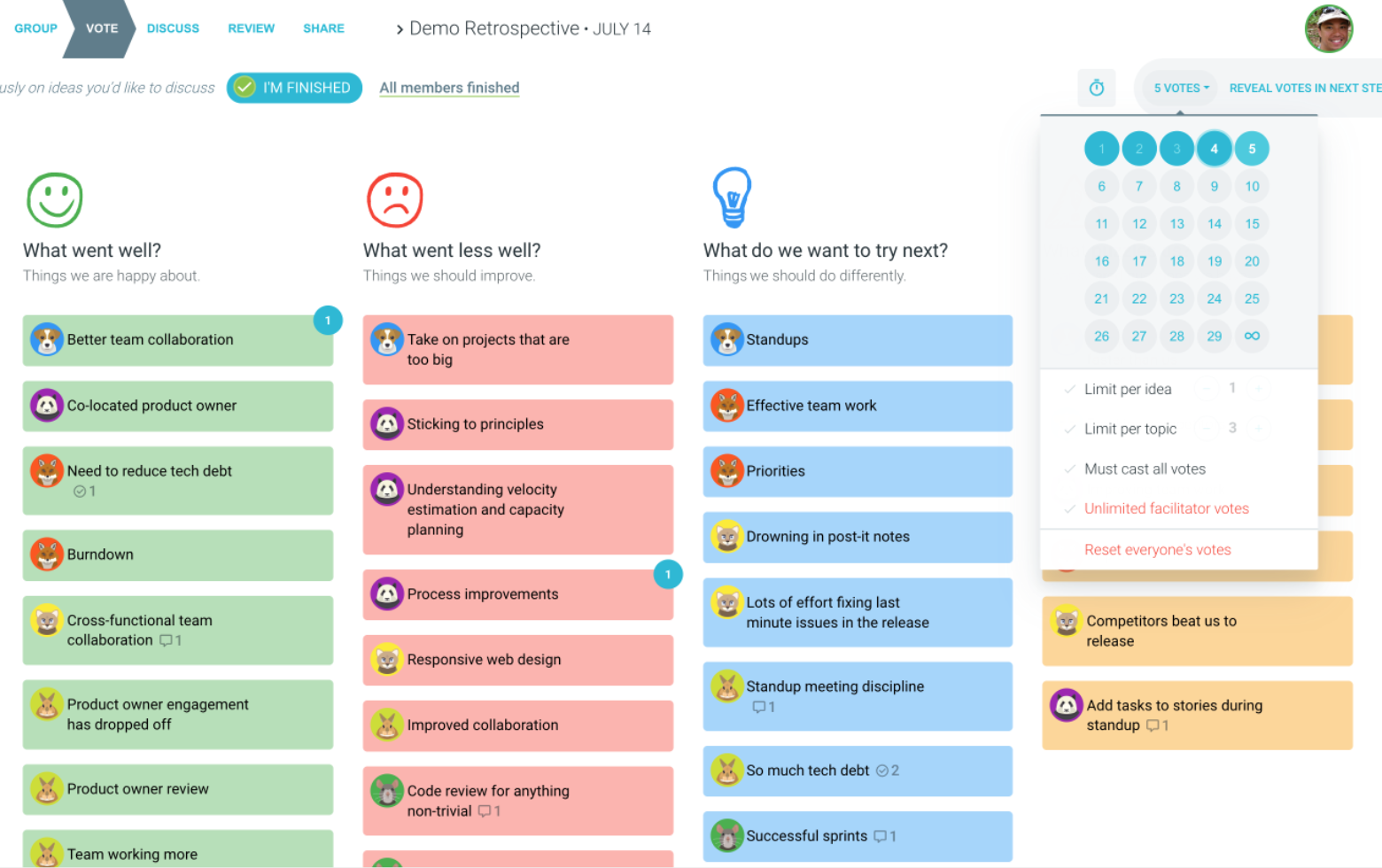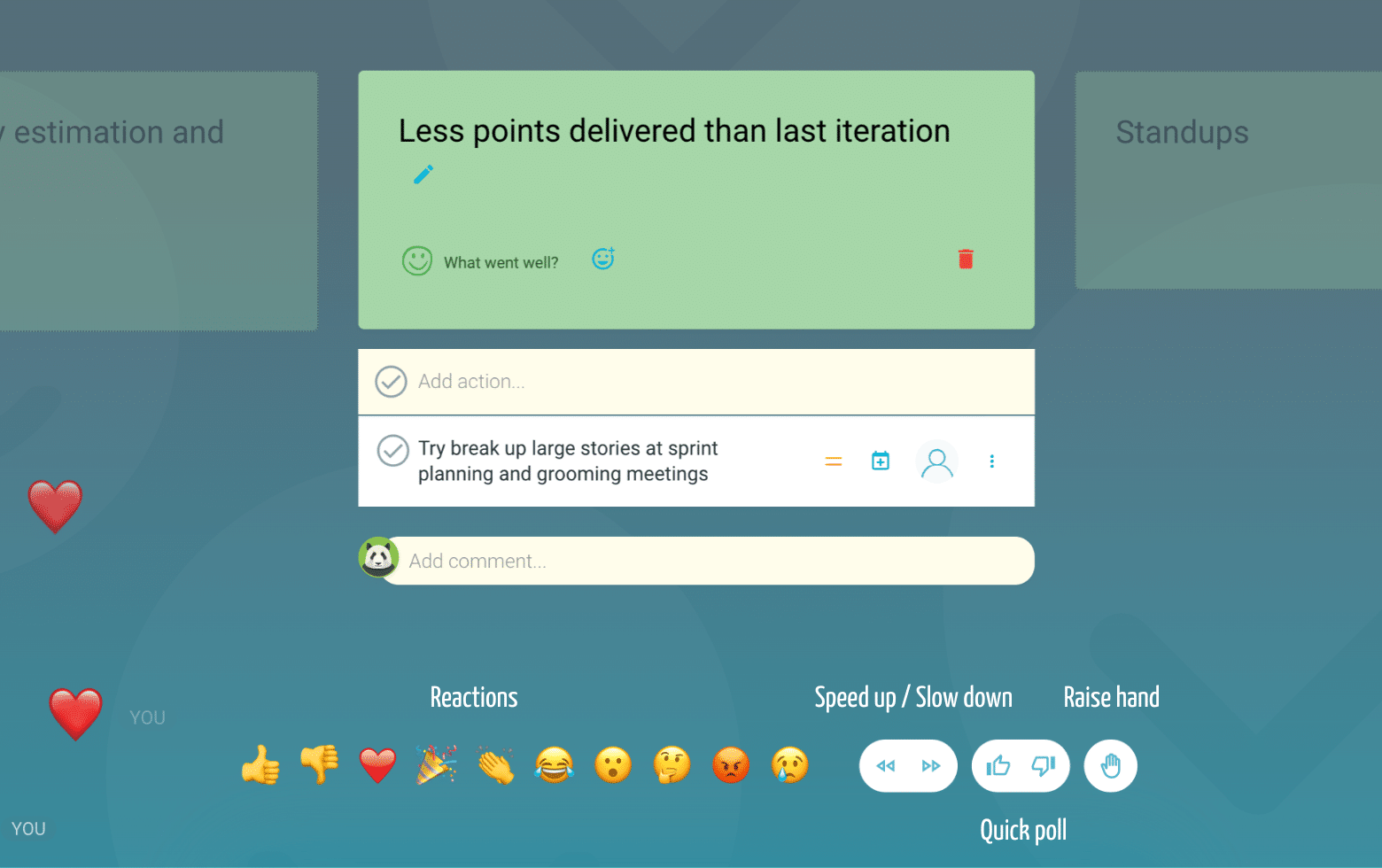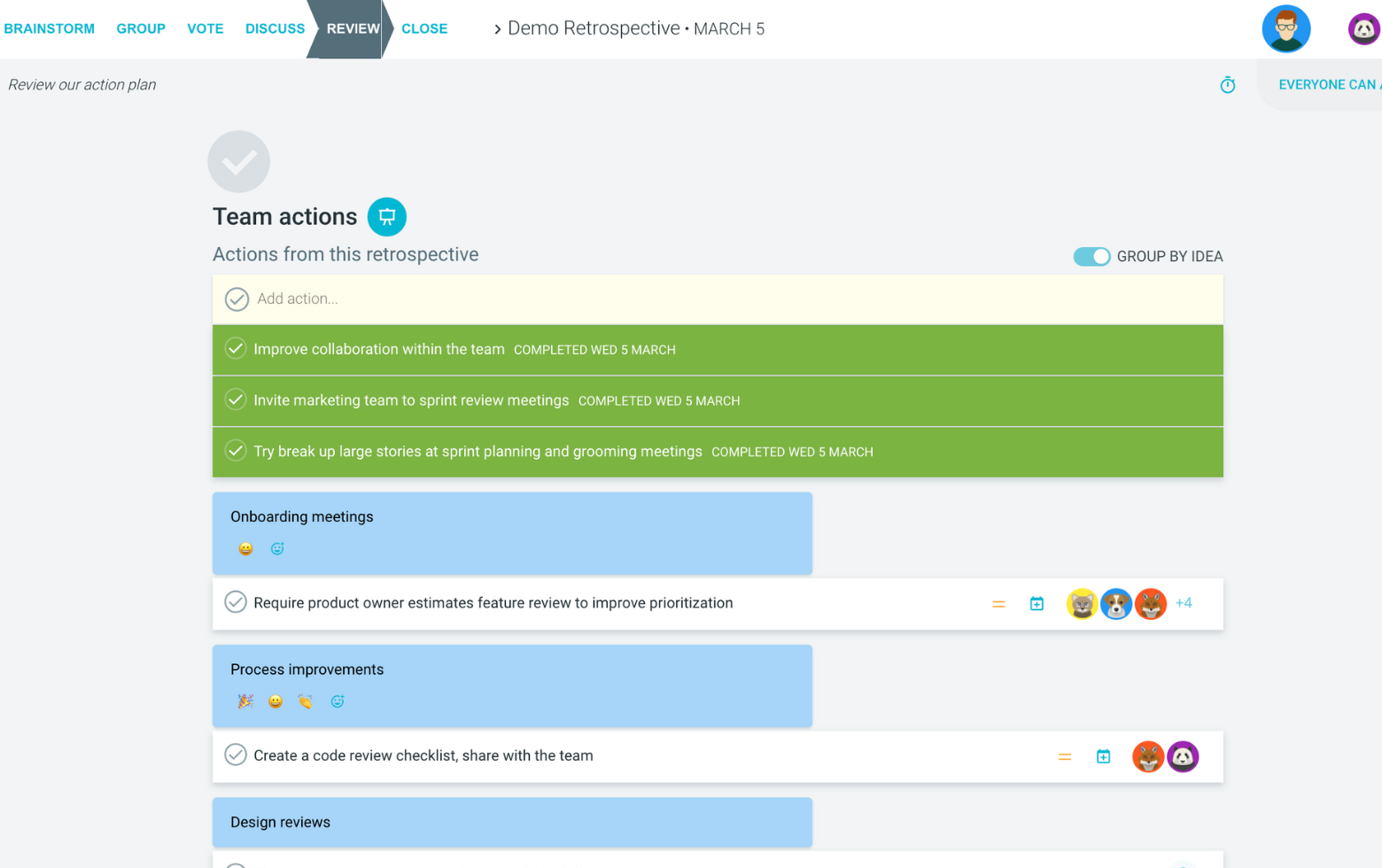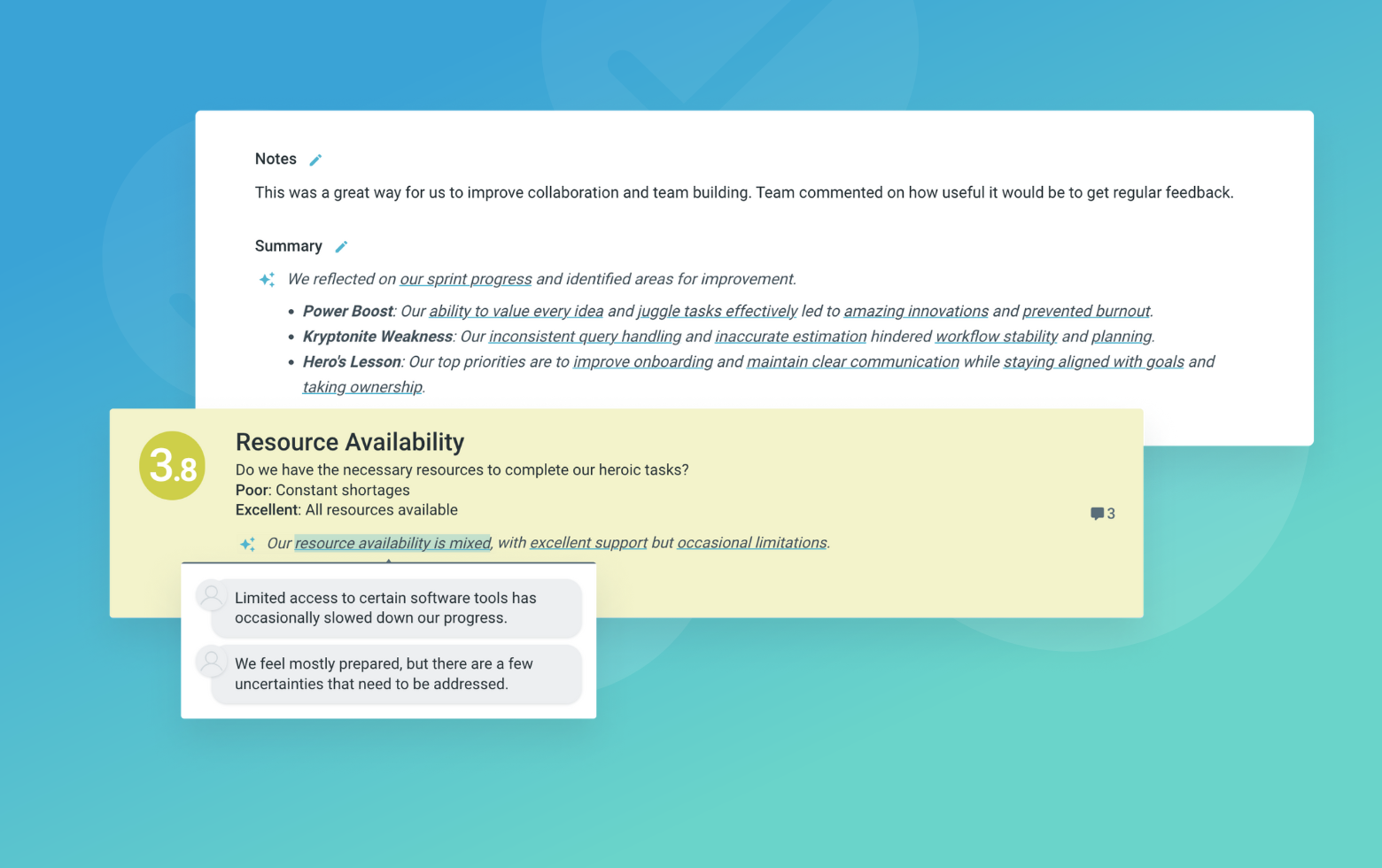The Sprint Retrospective is a key agile ceremony that allows teams to pause, reflect on their recent work, and identify opportunities for improvement. This template provides a structured format to discuss what went well, what could be improved, actionable steps to take, and any open questions or concerns.Regular retrospectives foster a culture of continuous learning, adaptation, and growth within agile teams. By openly examining successes, challenges, and puzzles, teams can adjust their processes, practices, and mindsets to enhance productivity, quality, and team dynamics.
What is The Sprint Retrospective
What went well?
Discuss the positive aspects and successes from the last sprint.
Encourage the team to share specific examples and appreciate each other's contributions. This builds morale and reinforces good practices.
What could be improved?
Identify areas of improvement, challenges faced, and potential roadblocks.
Create a safe space for open and honest feedback. Remind the team that the goal is to learn, not to blame individuals.
What actions can we take?
Propose specific steps to address the areas for improvement.
Encourage the team to suggest concrete and actionable steps. Assign owners and target dates for key action items.
What still puzzles us?
Surface any open questions, concerns or areas needing further discussion.
This topic allows the team to park outstanding issues for later exploration. Assign owners to investigate and report back.
Suggested icebreaker questions
- If our team was a vehicle, what kind would it be and why?
- What's the most valuable lesson you've learned from a past project or experience?
Ideas and tips for your retrospective meeting
- Create a safe and judgment-free environment for open and honest discussion.
- Encourage participation from all team members and value diverse perspectives.
- Focus on identifying actionable steps rather than just listing problems.
- Assign owners and target dates for key action items to ensure follow-through.
- Celebrate successes and recognize team members' contributions.
- Keep the retrospective time-boxed and focused to maintain engagement.
.
How to run effective meetings with TeamRetro
Start Your Session in a Click
Log into TeamRetro and choose your template. Customise questions and the workflow to create your perfect retro for your team.
Create Your Team Easily – No Separate Accounts Needed
Brainstorm Individually – Free From Bias
Smart Grouping for Faster Insights
Fair, Flexible, and Fast Voting
Engage, React, and Capture Key Insights
Walk your team through ideas one by one with Presentation Mode. Stay in sync, spark real-time discussions, and capture feedback with comments, live reactions, and polls—all in one place.
Turn Ideas Into Action
Propose next steps with team buy-in, get AI-powered action suggestions, and keep everything in one place. Committed actions sync to your personal dashboard and integrate with your workflow tools—keeping you on track.
Save, Share, and Stay on Track
Get quick AI-powered summaries, add facilitator notes, and store retrospectives in your library for easy access. Schedule your next session and track published actions to keep your team accountable at the next retro.
Turn Team Data into Actionable Insights
Uncover trends, common themes, and key engagement metrics at a glance. Track sentiment shifts, analyze conversations, and monitor completed actions to drive continuous improvement.
